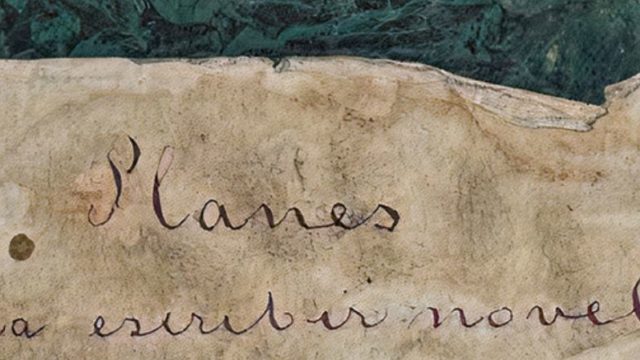https://soledadacosta.uniandes.edu.co/. Accessed February 2021.
Coordinated by Dr. Carolina Alzate, in association with the University of Los Andes and the National Library of Colombia, the Soledad Acosta de Samper Digital Library (Biblioteca Digital Soledad Acosta de Samper, in Spanish) is a Spanish-language project that seeks to provide open access to the complete works of Colombian author Soledad Acosta de Samper (1833-1913). Now recognized as one of that nation’s most important authors, Acosta de Samper was all but forgotten until Hispanic female scholars such as Monserrat Ordóñez awakened a renewed interest in her writings during the 1980s. Thanks to these efforts, Acosta de Samper is now appreciated for her remarkable literary prolificacy and ardent advocacy of women’s education and equal rights during a time when women were typically relegated to a supporting role in Colombian society. The author’s works were digitized in 2013 as part of the Colombian Ministry of Culture’s “Year of Soledad Acosta de Samper” celebrations, and the Soledad Acosta de Samper Digital Library organizes those products of her rich intellectual life into an easy-to-navigate website.
The About page introduces the project and defines its goal of making Acosta de Samper’s body of work accessible to both specialized researchers and the general public. Contributors responsible for bibliography, digitization, cataloguing, research, web design and technical support are also acknowledged. The Biography section details key events in the author’s life, including her childhood in Bogotá as the daughter of a Catholic Colombian father and Protestant Anglo-American mother, her travels to North America and Europe, her 1855 marriage to politician and writer José María de Samper, and her death in 1913. The biography also provides an overview of Acosta de Samper’s development as a writer, from her beginnings as a newspaper correspondent through to her later interest in biographies and historical works.
The site offers three ways to access Acosta de Samper’s work. The first is via General Collections, which presents the entire digitized oeuvre of 620 items. Most entries display a color image of a page of the digitized text along with corresponding metadata and a link to view the text in full. Many of the complete texts are provided by the National Library of Colombia, but some are also sourced from other international digital repositories, building a comprehensive collection of the author’s extant work in one open-access location.
The second way to access the work is through Collections, which organizes the contents of the site by format: publications in periodicals, manuscripts, books, and scrapbooks. The last of these sections features albums in which the author created collages by cutting and pasting her published writings alongside various images and illustrations. This is arguably one of the most unique features of the digital library, as it allows for an intimate look at the author’s creative practice of combining written word with visual ornamentation and includes collaborative items of this nature by the author and her husband, José María Samper. The Exhibitions section of the site features a digital exhibit with researched essays by Vanessa Miseres, Assistant Professor in the Department of Romance Languages & Literatures at the University of Notre Dame, about these objects, titled “The Scrapbooks of Soledad Acosta de Samper: Writing, Material Culture, and Crafting.” Due to the sheer volume and variety of works, categorization of the “Collections” section by year would be a welcome addition to this part of the project, enabling a view of the author’s development and evolving interests over time. However, users do have the option to click on the dates hyperlinked in each item’s metadata in order to view other items produced within that same period of time.
The third route into Acosta de Samper’s work is the Genres section, which arranges her writings into twenty-two categories. Some of these include diaries and memoirs, collaboratively illustrated books of poetry, correspondence, psychological and costumbrista novels, historical novels and sketches, visual narratives, theater, and writings on gender. The project also provides an explanation of each of those categories and what they contain. Because Acosta de Samper wrote in such varied formats on such a broad variety of topics, this section of the digital library appears to be most representative of the author’s body of work as well as the easiest to navigate.
The Digital Library serves as a valuable resource for those conducting research related to Acosta de Samper, who displayed a lifelong commitment to the defense of women’s rights and is an important figure in the history of Colombia and Latin America more generally. It also presents opportunities for those studying nineteenth-century Colombian history, literary history, women’s studies and other topics within Latin American studies. Additionally, the full-color scans of the manuscripts, scrapbooks, periodicals, published books and handwritten diary are of value to those interested in the history, aesthetics, and materiality of the documents themselves.
First launched in 2019, the project has clearly achieved much in a short time. The About page indicates that many additional works are still being digitized and will soon be added to the Library, but it is unclear as to when this information was last updated. As the project develops further, hopefully the creators will be able to add more exhibits on specific topics related to the author. While access to literary manuscripts provides a uniquely valuable look into the author’s work, digital transcriptions of the manuscript texts would facilitate readability and allow users to interact with the material more easily. Furthermore, an initiative to provide translations of the texts would have the potential to help further disseminate Acosta de Samper’s work beyond the Spanish-speaking world. In sum, the Soledad Acosta de Samper Digital Library is a valuable open-access resource for exploring the work of a remarkable Latin American woman and shows promise for even further development as it moves towards its creators’ goal of maintaining an exhaustive public archive of the author’s works.
Georgina Wilson Aranguren, B.A., University of North Florida


